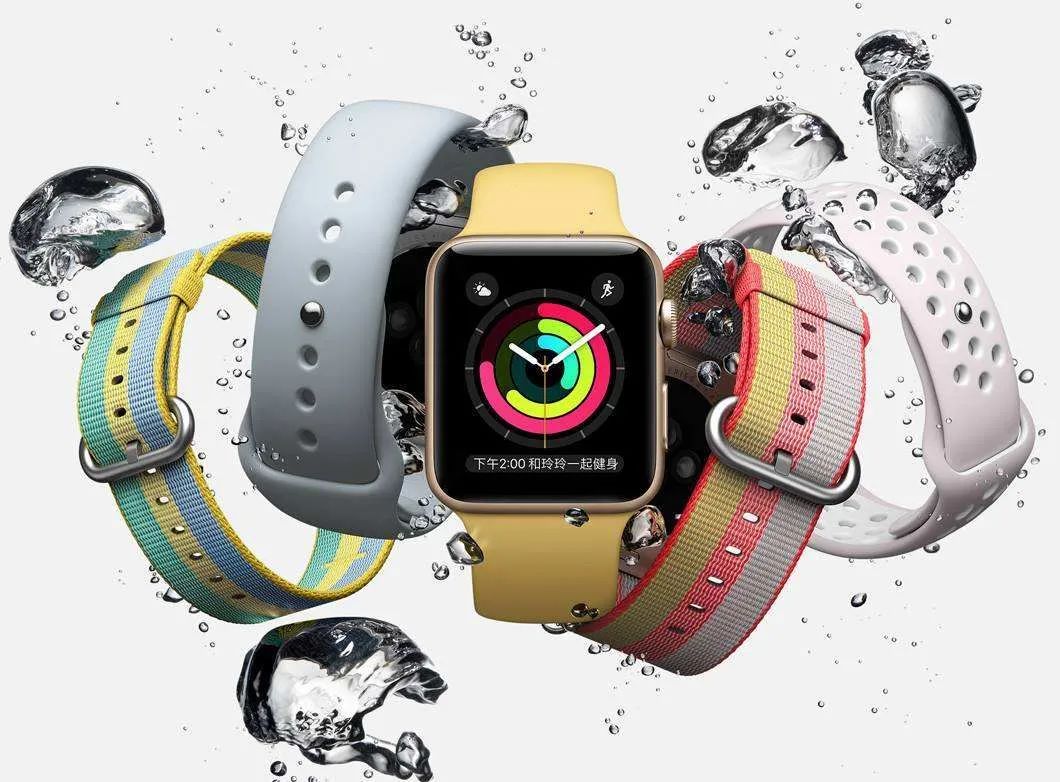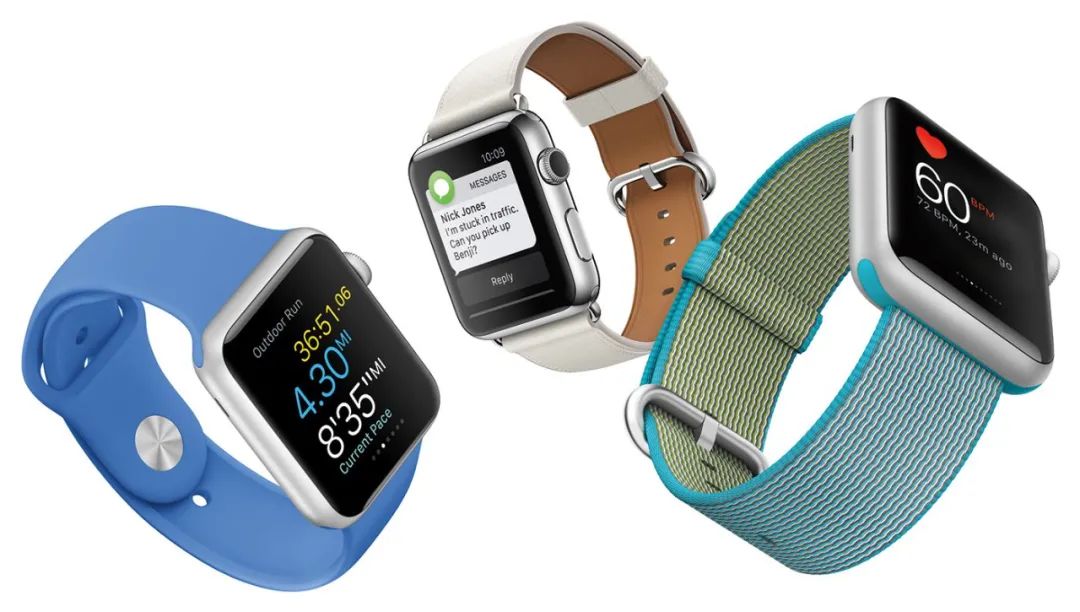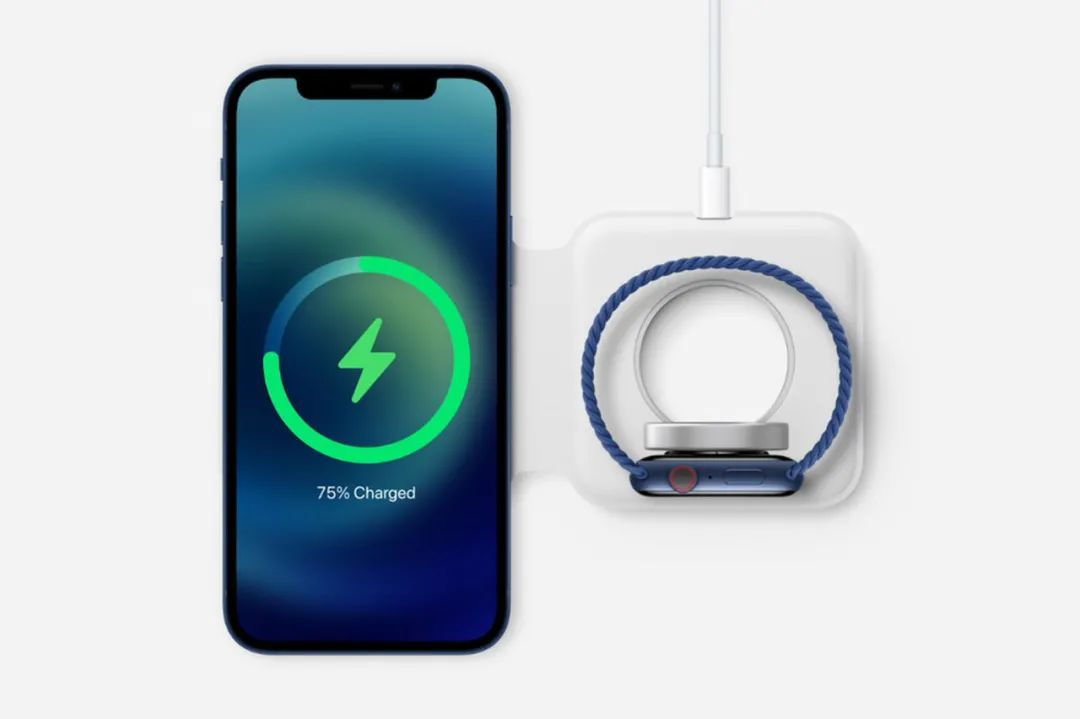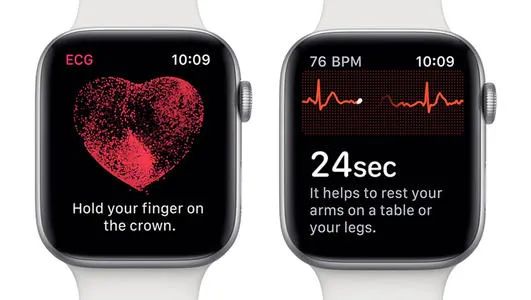
Have you noticed that more and more people around you are wearing smartwatches?
This is not an illusion. According to data released by Strategy Analytics, global smartwatch shipments increased by 20% year-on-year in the first quarter of 2020, reaching 13.7 million units. A study published by the market research firm Strategy Analytics at the beginning of the year revealed that Apple Watch sales in 2019 surpassed the entire Swiss watch industry. In 2019, the global shipment of Apple Watch reached 30.7 million units, while the total sales of Swiss watch brands were 21.1 million units.

The era of using watches just to tell time is truly over.
One of the most noteworthy sets of data is from the well-known research institution IDC, which reported that global smartphone shipments fell by 2.3% year-on-year in 2019, while global shipments of wrist-worn wearable devices increased by 22.7%. In China, shipments of wrist-worn wearable devices for adults exceeded 10 million units in 2019, a year-on-year increase of 58.2%, marking the highest growth rate in three years.
In an age where everyone has a smartphone, why are more people choosing to wear smartwatches?
Quantifying Yourself with Smartwatches
For this generation of internet users, smartwatches are no longer just watches. In foreign countries, using smartwatches and other wearable devices to track and quantify oneself has become a trend. In the anime “Slam Dunk,” the character Sakuragi Hanamichi becomes frustrated after reviewing footage of his shooting posture, realizing it differs greatly from the standard he imagined, prompting him to correct himself the next day; in the movie “Breaking Wind,” the cyclists played by Eddie Peng and Dou Xiao monitor their heart rates in real-time, slowing down when their heart rates become too high to ensure their safety.

Now, the trend of quantifying oneself using smartwatches and fitness bands has spread widely. If you search for “heart rate” or “sleep” in your social circle, you will find many friends using smart devices to monitor and quantify their health status. “I mainly use my smartwatch for exercise management and health monitoring,” said Xiaoting, a young white-collar worker in Nanshan Science and Technology Park in Shenzhen, who has been wearing watches since school. Earlier this year, she spent over 2,000 yuan to buy a smartwatch, and although she hesitated at first, the health monitoring features surprised her.
The reason may lie in the accelerated pace of modern life—ten years ago, everyone worked a fixed 9-to-5 schedule, with clear boundaries between work and life, and there was little need to pay attention to physical monitoring. But now, a phone call, an email, or a WeChat message may require immediate attention, blurring the lines between work and life. In first-tier cities like Beijing, Shanghai, and Shenzhen, overtime work is common, and people need to keep track of their health status in real-time.
IDC’s market research report pointed out that the outbreak of the COVID-19 pandemic has made more consumers concerned about health and immunity. Whether it is developing daily exercise habits or paying attention to personal health metrics, there will be more potential consumer demand. From the manufacturers’ perspective, health-related wearable products are the next competitive blue ocean market. IDC predicted in September this year that from 2020 to 2024, the annual growth rate of global wrist-worn wearable device shipments will be 14.3%, indicating that this trend will continue for a long time.
Not Competing with Smartphones
In fact, smartwatches have also faced challenges. In the early days of smartwatches, some hardware manufacturers treated them as “mini” smartphones, incorporating all the features of smartphones—making calls, sending WeChat messages, setting alarms, playing music, and using voice assistants. To accommodate the characteristics of watches, hardware manufacturers also introduced personalized watch faces and bands.
Although the features were comprehensive, smartwatches initially failed to address a core issue: their distinction from smartphones, leading them to either become a useless “toy” or a competitor to smartphones.
It wasn’t until the Apple Watch was recognized by users in 2019 that the situation changed. Financial reports showed that Apple’s total revenue from wearable devices, home devices, and accessories reached $27.184 billion in 2019. Although Apple did not disclose separate revenue and sales data for the Apple Watch, third-party statistics indicate that its sales remain impressive. According to Strategy Analytics, the global shipment of Apple Watch reached 30.7 million units in 2019, surpassing the total shipments of Swiss watch companies.

The surge in Apple Watch sales is largely attributed to its accurate positioning. Although earlier generations of Apple Watch were closely tied to smartphones, as the industry evolved, the relationship between Apple Watch and smartphones has gradually distanced.
On June 4, 2019, at the WWDC conference, Apple introduced a revolutionary change, launching a standalone operating system, iPad OS, for the iPad, and also bringing a new Watch OS 6 for the Apple Watch, which supports an independent App Store, allowing users to install and manage applications directly on the Apple Watch without relying on the iPhone.

The independent eSIM card and standalone OS have transformed smartwatches from being a useless “toy” into devices with greater developmental potential, not as replacements for smartphones. As the adversarial relationship fades, the path for smartwatches has opened up.
Of course, Apple was not the first manufacturer to create smartwatches, but after the launch of the Apple Watch, the market’s acceptance of smartwatches significantly increased. Moreover, despite Apple’s high price, it has provided other hardware manufacturers with opportunities to survive, allowing them to introduce similar technologies to the Apple Watch, such as blood oxygen monitoring, ECG monitoring, and exercise data recording—technologies that are not exclusive to Apple. Currently, for users who want to buy smartwatches but find them too expensive, brands like Huawei and Xiaomi offer very good alternatives. With price factors at play, Huawei and Xiaomi may even surpass Apple Watch in sales.

How Far Are We from the IoT Era of Smartwatches?
It is worth noting that as more smartphone manufacturers begin to launch smartwatches, there is a deeper interpretation of the market: smartwatches are not just watches; they are seen by smartphone manufacturers as a gateway to the IoT (Internet of Things) era.
Based on the three key features of 5G technology: high bandwidth, low latency, and massive connectivity, real-time transmission in large scenarios becomes possible, and multi-device interconnectivity is established, heralding the arrival of a new IoT era.

Smart home technology is the most basic application of IoT at the household level, with vast prospects. Previously, internet giants launched smart speakers to seize the entry point of the smart home market.
However, industry insiders believe that the competition for the entry point of smart homes remains unresolved. In fact, many smart hardware products have been expected to become the entry point for smart homes. For example, routers were initially seen as the entry point for smart homes, and smart TVs in living rooms were also highly anticipated, followed by smart locks and smart speakers…
“As the entry point for smart home IoT, these products have limitations. For instance, the penetration rate of smart speakers is low, and most lack display functionality; while watches are worn at all times, their screens are too small, making display advantages less significant; the advantage of living room TVs is their large screens, which are very suitable for displaying information, but they lack mobility and cannot capture commands from the owner at any time,” said Liu Bucheng, an expert in the home appliance industry.

The competition for entry points reflects the reality that there are no industry standards for smart homes. Without unified industry standards, different fields and companies are fighting their own battles, creating their own systems, and smart home products are diverse, making it difficult to achieve system compatibility, information sharing, and interconnectivity. The IoT era for smartwatches remains a distant dream.
For smartphone manufacturers, launching smartwatches is also based on the most practical revenue needs. “The smartphone market has reached a growth bottleneck, and a large-scale replacement wave in the 5G era will not arrive in the short term,” said Sun Yanbiao, an expert in the smartphone industry. Compared to smartphones, wearable hardware like wireless earbuds and smartwatches have higher profit margins. Currently, the total shipment of smartwatches from Apple, Samsung, and Huawei has exceeded 10 million units, while the smartphone market has a stock of over a billion units, presenting a huge growth opportunity.
Source: Xiaoshuo Communication, Author: Ye JingThe Rise of Wearable Devices in the 5G Era is InevitableIt’s All About Seizing Opportunities Share
Share Collect
Collect Like
Like View
View